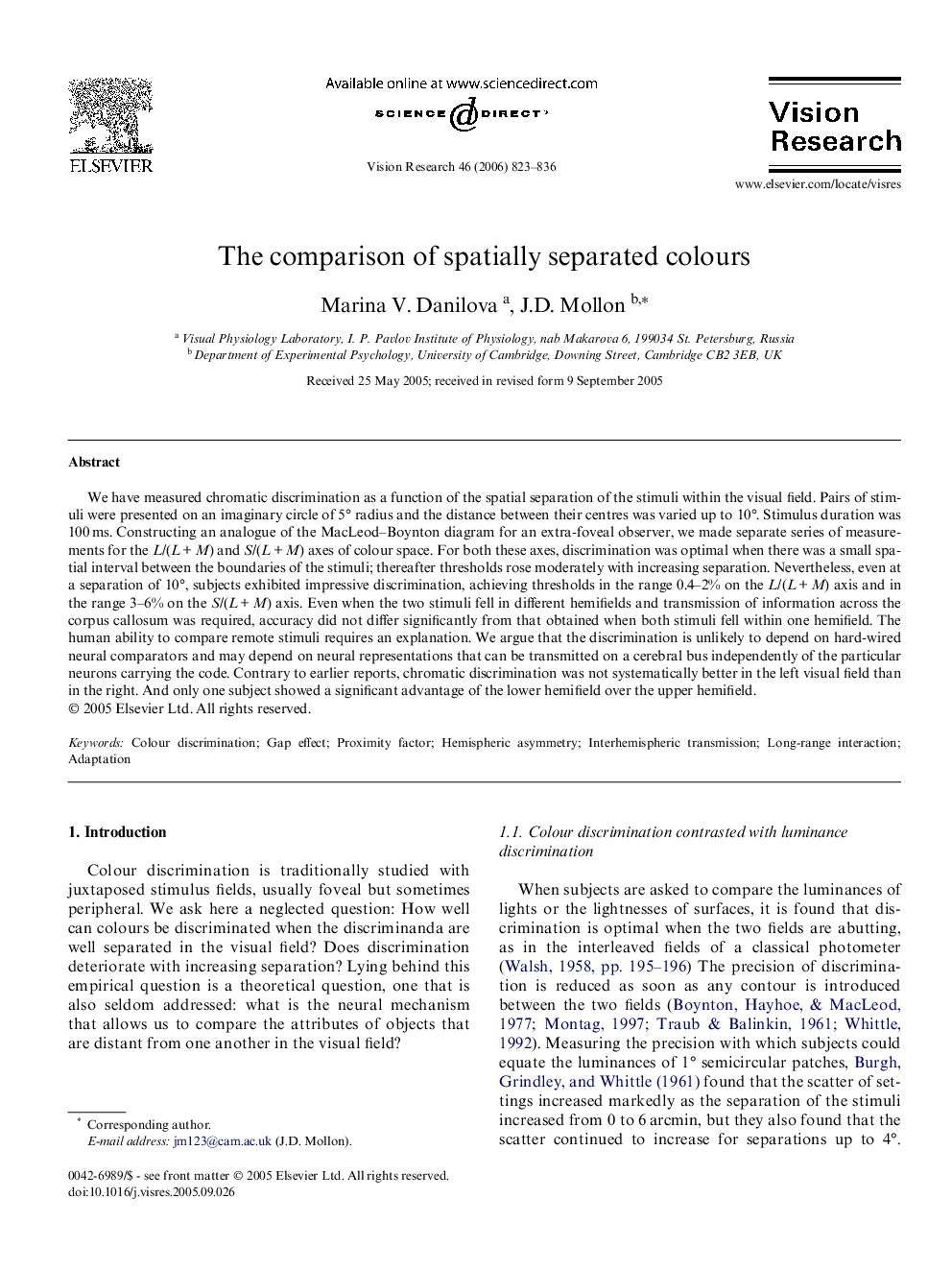| Article ID | Journal | Published Year | Pages | File Type |
|---|---|---|---|---|
| 4036341 | Vision Research | 2006 | 14 Pages |
We have measured chromatic discrimination as a function of the spatial separation of the stimuli within the visual field. Pairs of stimuli were presented on an imaginary circle of 5° radius and the distance between their centres was varied up to 10°. Stimulus duration was 100 ms. Constructing an analogue of the MacLeod–Boynton diagram for an extra-foveal observer, we made separate series of measurements for the L/(L + M) and S/(L + M) axes of colour space. For both these axes, discrimination was optimal when there was a small spatial interval between the boundaries of the stimuli; thereafter thresholds rose moderately with increasing separation. Nevertheless, even at a separation of 10°, subjects exhibited impressive discrimination, achieving thresholds in the range 0.4–2% on the L/(L + M) axis and in the range 3–6% on the S/(L + M) axis. Even when the two stimuli fell in different hemifields and transmission of information across the corpus callosum was required, accuracy did not differ significantly from that obtained when both stimuli fell within one hemifield. The human ability to compare remote stimuli requires an explanation. We argue that the discrimination is unlikely to depend on hard-wired neural comparators and may depend on neural representations that can be transmitted on a cerebral bus independently of the particular neurons carrying the code. Contrary to earlier reports, chromatic discrimination was not systematically better in the left visual field than in the right. And only one subject showed a significant advantage of the lower hemifield over the upper hemifield.
